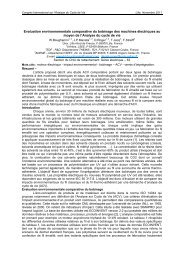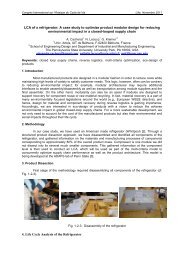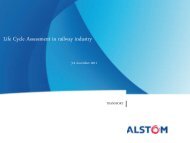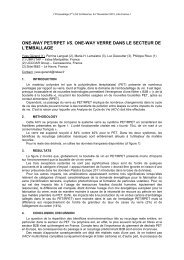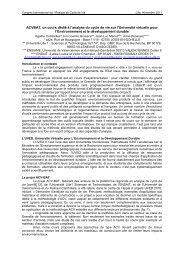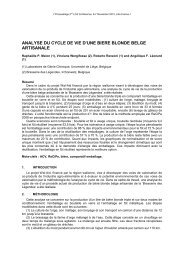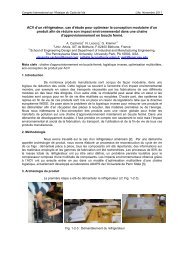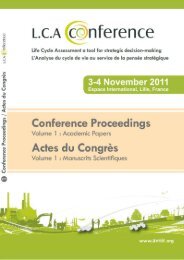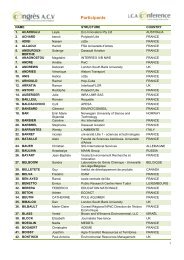Assessing Temporary Carbon Storage in Life Cycle Assessment and ...
Assessing Temporary Carbon Storage in Life Cycle Assessment and ...
Assessing Temporary Carbon Storage in Life Cycle Assessment and ...
You also want an ePaper? Increase the reach of your titles
YUMPU automatically turns print PDFs into web optimized ePapers that Google loves.
Relative impact of an emission occurr<strong>in</strong>g at year t<br />
1<br />
0<br />
Option 1: Fixed GWP<br />
Option 2: Moura‐Costa<br />
Option 3a: ILCD<br />
Option 3b: PAS2050<br />
Option 4: Dynamic AGWP<br />
0 50 100<br />
Time (years)<br />
Figure 3. Illustration of the four options discussed for the assessment of temporary carbon storage <strong>and</strong><br />
delayed emissions <strong>in</strong> LCA <strong>and</strong> CF<br />
A time horizon (100 years <strong>in</strong> Figure 3) is chosen beyond which the impact is zero, because the<br />
problem is considered no longer relevant. Option 1 reflects a constant characterization factor. The<br />
problem with this option is that a high value is given for an emission occurr<strong>in</strong>g one year before the<br />
time horizon, <strong>and</strong> then no value for an emission occurr<strong>in</strong>g one year after. That means that a substantial<br />
benefit would be given for delay<strong>in</strong>g an emission one year more, which does not reflect reality. For<br />
long time horizons, the consequences of this would not be significant, but for shorter time horizons, it<br />
is better to use a decreas<strong>in</strong>g characterization factor. Option 2 is the Moura-Costa approach. The<br />
problem with this option, as stated <strong>in</strong> Section 2.1, is that it is <strong>in</strong>consistent with the concept of time<br />
horizon, s<strong>in</strong>ce the benefit of delay<strong>in</strong>g a unit mass pulse-emission from a number of years equal to the<br />
time horizon is higher than the total impact of this emission <strong>in</strong>tegrated over this time horizon. That is<br />
why the impact of a delayed emission reaches zero at 48 years <strong>in</strong>stead of 100 years. Option 3, as used<br />
<strong>in</strong> the ILCD H<strong>and</strong>book <strong>and</strong> the PAS 2050 st<strong>and</strong>ard, is a l<strong>in</strong>ear approximation of option 4, which is<br />
dynamic AGWP, or the Lashof approach. A l<strong>in</strong>ear approximation has the advantage of be<strong>in</strong>g very<br />
simple to use <strong>in</strong> LCA, as the yearly benefit for delay<strong>in</strong>g an emission is constant. As the difference<br />
17



